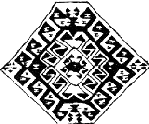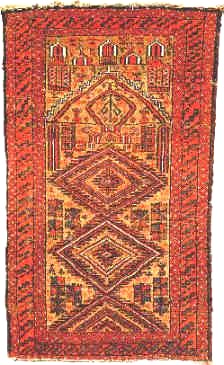|
|
Geography
Systan is presently one of the Iranian provinces covering some of the Eastern Border of this country. The old Systan consisted of Baluchistan (some parts presently in Pakistan) and reached towards the North well into Afghanistan up to Herat and South down to the sea; and from the west reached Kerman and Mavara-al-Nahr.
In modern geographical division except from a big part in Pakistan and Afghanistan, Baluchistan has gained more significance making Systan only a part of Systan and Baluchistan province. The northern parts of Systan belong to the province of Khorasan and Systan has become a small land with an area of 200kmx70km.

History
Systan was called in the ancient times "Zerang" (Zarka in Avesta), and it was a holy fertile land. Its other name was "Nimrouz" as it is seen on the local coins during the Islamic era. One of the most important historical incidents, is the entry of "Secca" tribes into this land and thus the change of its name to Systan. Seccas were the tribe from the Northern Iran who spread to East and South of Iran and had gone West as far as Hamadan.
Until a few centuries ago the land on Systan provided a major part of the Iranian crops, but with over cultivation, the land became salty and unsuitable for agriculture. Other factors such as colonization also lead to destruction of this once glorious region. Today, Systan is considered as one of the poorest regions of Iran.
There was a great reform with the entry of Seccas to this region. Among them, their influence on local weaving had produced kilims and rugs and Namads even 5 centuries BC. (Weaving, Dyeing, etc.). During the Parthian and Sassanian dynasties, the region enjoyed prosperous times, to the extent that it was one of the richest regions. The start of decline was with Mongol invasion. During the period of occupation by Mongols the whole country suffered massive destruction. The decline even continued well after under Timurid dynasty.
Other foreign leaders, especially Turks, tried to destroy Systan's main families such as the Kianis, through mass murder and destruction. Other factors such as reduction of water in the main river "Hirmand" caused by construction of a number of dams in Afghanistan lead to deprivation of this region.
Today we have two Systans. One in Iran and the other in Afghanistan. In Iran it is part of Systan and Baluchistan province. From the North it reaches the Afghan border and Khorasan province and from the South to the province of Baluchistan and from the East to Afghanistan and Pakistan and from the West to the desert of Kerman. Its main city (center) is Zabol.
Syatan Rugs
Systan carpets are divided into three categories:
1. Ancient or historical type, which was woven until the turn of the 20th century.
2. Middle era, which has been woven since the 19th century
3. Modern type, which is currently woven.

140x240 cm, Woolen Rug (About 1940)
|
|


